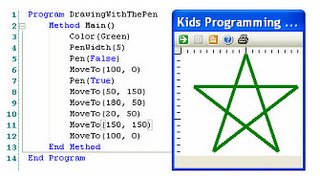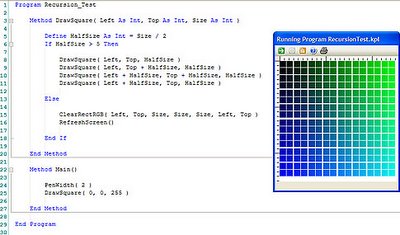But, is it possible to fully understand the basis of computer science without learning how to program ? It isn't, in my opinion.
Many, many times I have spent a lot of time trying to explain why a computer can or cannot do this or that ... and the problem, frequently, is the lack of knowledge about programming of my audience.
To learn programming is to understand what computers really understand.
And it is generally a difficult process, since the current programming languages need strong skills from the very beginning.
Because of this complexity, a lot of alternative methods for learning how to program have appeared. I remember perfectly two of them.
The first attempt to make programming closer to people was logo (see more information here); a fantastic approach, based on Lisp, that uses a graphical turtle in order to see the results of our programs. In my opinion, it was (and it is) the best first approach to programming for kids.
I also remember Karel the Robot by Richard E. Pattis. In this case, we can control a robot which is able to get information about the environment and carry out actions like collecting things and moving around. Originally based on Pascal, now there are C based versions.
We have recently a new alternative: the Kid's Programming Language.

I have downloaded it, and it is basically a BASIC inspired language. It has some strong points: very easy interface, .Net based, automatic conversion to C# and Visual Basic, and a very comfortable graphic library. This graphic library is perhaps the most interesting feature, since with it we can see immediately very impressive results on screen.
It is well-known how boring 'console based' applications are, so to have the chance to produce very attractive graphics with just some lines of code it's something that guarantees success.

A future characteristic of this programming language is 3D graphics. With this new feature, this language could be also a very interesting first step in computer graphics introduction.

A very good introduction to mini-languages as a first step in learning how to program can be consulted in here.
2 comments:
Super interessant noi. Sobretot per als que tenim xiquets... la llàstima és que, en lloc de fer-los tenistes i posar-los a facturar des dels quinze, es faran programadors de puta mare i viuran amb nosaltres fins als 35!!!
;-)
Post a Comment